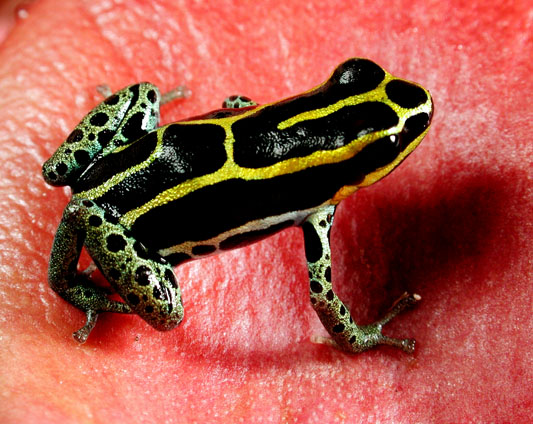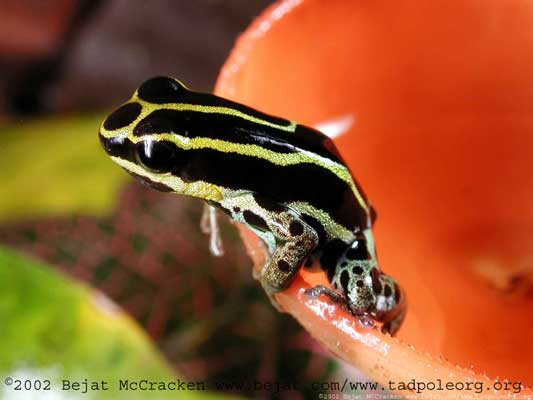Amazon Poison Frog (Dendrobates ventrimaculatus)
Class: Amphibia
Class: Amphibia, Order: Anura, Family: Dendrobatidae, Genus: Dendrobates, Species: ventrimaculatus
Photo Courtesy tadpoleorg.org
Some debate exists about whether there are really several species of Amazon Poison Frogs. It is widely acknowledged that the coloration of members of this species can vary significantly depending on location.
All members, however, are between 16 and 21 mm (about thumbnail size) in length. They have pale bluish-green, spotted web patterns on their undersides (the species' name means "spotted belly"). Their limbs are colored similarly. Members of this species have dorsal sides that are black with yellow or light-red stripes. These stripes will often split into a y-shape near the snout.
Amazon Poison Frogs live in the Amazon lowlands of Peru, Ecuador, Colombia, Brazil and French Guyana. They seem to prefer living in bromeliad plants, which grow both on the ground and in trees. They feed on virtually any type of insect small enough to be consumed.
During mating, males will make a soft buzzing call. If a female is carrying eggs, then she will approach a male and together they will clean a place to lay those eggs. Once the eggs (2-10) are laid, the male will leave his sperm in the surrounding water. When the eggs hatch (in 12-14 days), the larvae (tadpoles) are carried by the males to water deposits in bromeliad plants where they feed on small insects until metamorphosis is complete about 8 weeks later.
CLICK HERE FOR MORE EXTRAORDINARY
ANIMALS and PLANTS OF YASUNÍ,
THE MOST BIODIVERSE FOREST KNOWN ON EARTH
Yasuní Biodiversity Main Page
|


